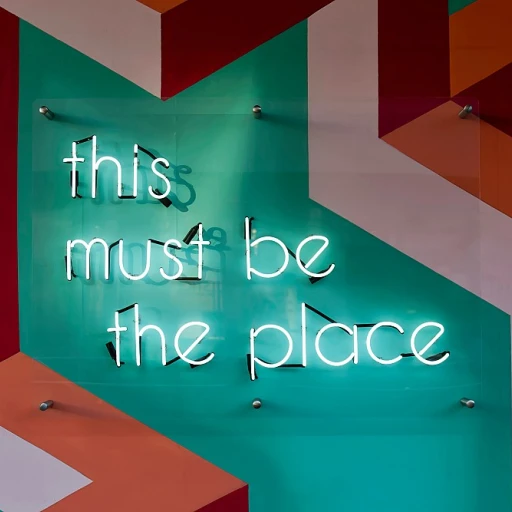
Understanding Cultural Norms
Decoding Cultural Norms
The concept of work-life balance is intricately tied to cultural norms and values, which vary significantly across the globe. Understanding these cultural differences is crucial for companies seeking to create a harmonious work environment for their diverse employee base. In cultures that prioritize collectivism, organizations often promote strong team dynamics and expect employees to align with group objectives. Conversely, cultures that emphasize individualism might prioritize personal achievement and recognize individual contributions more prominently.
Companies operating in multicultural environments need to address these cultural nuances to ensure inclusivity and a sense of belonging among their workforce. Questions about company values, such as how an organization recognizes achievements or organizes team activities, can reveal much about its underlying cultural norms. Survey questions inquiring about cultural fit and employee engagement can help gauge whether diversity and inclusion efforts are successful in fostering an environment where all employees feel valued and included.
Moreover, by recognizing different cultural attitudes towards work life balance, companies can better tailor their employee engagement strategies to suit the diverse values and expectations present within their teams. Effective communication plays a vital role in navigating these cultural landscapes, ensuring that cultural differences do not become barriers but instead enrich the work environment. Exploring these cultural questions deeply can aid organizations in aligning their workplace culture with the broader organizational mission and values.
For more insights on employee engagement and cultural dynamics in the workplace, consider exploring these inspirational resources.
Workplace Expectations Across Cultures
Understanding Global Workplace Behaviors
In today's interconnected world, work environments have become more diverse, bringing together a myriad of cultural norms and values. This diversity can pose unique challenges when it comes to blending into a workplace culture, especially in organizations with a strong emphasis on their specific values and practices. Globally, workplace expectations can differ drastically. For example, in some cultures, there's an emphasis on strict hierarchies and formal communication, whereas in others, flat structures and open-door policies are the norms. Understanding these cultural differences can provide an advantage for employees and organizations alike in terms of employee engagement and a sense of belonging. Employers aiming to foster an inclusive environment often conduct culture surveys to gather feedback about employee satisfaction and engagement. The questions in these surveys can reflect how an organization's culture aligns with or diverges from the cultural expectations of its diverse team members. Language is another factor that can't be overlooked. In multicultural teams, language barriers can impact decision making and communication, leading to misunderstandings or feelings of exclusion. Training programs that emphasize cross-cultural communication can help bridge these gaps, fostering a sense of inclusion and community amongst team members. Overall, striking a balance in a culturally diverse workplace requires ongoing dialogue and adaptability from both the organization and its employees. Employers must remain open to feedback to align their company culture with diverse employee values, facilitating a harmonious work culture where everyone feels appreciated and engaged.Cultural Attitudes Towards Time Management
Diverse Cultural Perceptions of Time at Work
In a multicultural workplace, understanding how time management is perceived across different cultures is crucial for fostering a harmonious work environment. Different cultural norms influence how employees regard punctuality, deadlines, and the structure of their workdays.
Some cultures prioritize strict adherence to schedules and value timeliness as a sign of respect and professionalism. In these cultures, the expectation is that meetings start and end on time, and deadlines are firmly observed. This approach to time management often aligns with cultures that place a high value on organizational efficiency and structured decision making.
Conversely, other cultures may have a more flexible approach to time, seeing schedules as adaptable and open to change based on the needs of the moment. Here, the focus might be more on relationships and the quality of interactions than on rigid timekeeping. This can sometimes lead to misunderstandings between team members from different backgrounds, highlighting the importance of clear communication and setting mutual expectations.
For organizations looking to balance these diverse approaches, it is essential to engage in open discussions about work culture and encourage feedback from employees about how they perceive and manage their time at work. This can be facilitated through culture surveys and questions about individual preferences, helping leaders understand the different values that influence their teams.
Ultimately, the goal is to create a sense of belonging for all employees. By embracing cultural differences and fostering an inclusive atmosphere, companies can improve employee engagement and facilitate effective work-life balance. For those interested in building strong, cohesive teams amidst diverse cultural attitudes towards time, innovative team-building activities can offer opportunities for shared understanding and collaboration.
Family and Social Obligations
Balancing Family Commitments with Work
In many cultures, family and social obligations hold significant importance, often influencing an employee's approach to work-life balance. Understanding these cultural norms can assist organizations in creating more inclusive environments that accommodate diverse values. For instance, in certain cultures, family responsibilities are prioritized heavily, and employees might feel compelled to allocate time for familial duties over work commitments. This can impact an employee's presence in the workplace and their ability to adhere strictly to organizational expectations. To address these dynamics, organizations should consider:- Flexibility and Understanding: Encouraging flexible working arrangements can enable employees to meet both work and family obligations. This approach fosters a more supportive work culture, where employees feel their personal priorities are respected.
- Open Communication: Creating open lines of communication is essential. Encourage employees to discuss family obligations honestly and ensure managers show empathy and provide support when needed.
- Feedback Mechanisms: Implementing regular feedback channels and surveys about culture can help identify any disconnects between company values and employees' familial needs. This information can guide decision making in developing more inclusive work policies.
- Tailored Benefits: Offering benefits that align with cultural values, such as parental leave or family care support, can significantly enhance employee engagement and sense of belonging within a company.
Technology's Role in Cultural Work-Life Balance
Technology's Impact on Balancing Work and Life Across Cultures
In today's hyper-connected world, technology plays an instrumental role in shaping work-life balance, particularly in diverse cultural settings. As organizations evolve to embrace technology, it is essential to explore how these digital tools intersect with cultural norms and values, influencing employee engagement and workplace culture. The use of technology can facilitate better communication and connectivity, allowing employees from different cultures to collaborate effectively. In organizations that prioritize diversity and inclusion, technology acts as a bridge, connecting team members across various time zones and cultures. However, it is crucial to address language diversity and ensure all communication tools are accessible to foster a sense of belonging in the work environment. In surveys about company culture, the impact of technology on work-life balance is often a recurring theme. These culture surveys can provide valuable feedback, enabling companies to refine their strategies and policies. Organizations striving for a harmonized work culture must consider not only the technological tools at their disposal but also how they align with employee values and expectations. Moreover, technology can support decision-making processes by collecting and analyzing data on work life. Questions about technology usage in company surveys often reveal insights into employees' attitudes towards flexible work arrangements and remote work. This feedback can inform how organizations adapt their environments to foster a better balance between work and personal life. In conclusion, while technology offers promising solutions for achieving work-life balance in multicultural environments, it is the responsibility of the company to ensure its integration respects cultural differences and enhances employee satisfaction. By addressing questions about culture and technology, organizations can create a thriving, cohesive work environment that supports the diverse needs of their workforce.Strategies for Achieving Balance in Multicultural Environments
Embracing Cultural Diversity for Balance
In a multicultural work environment, understanding and embracing cultural diversity is crucial for achieving work-life balance. Organizations should foster an inclusive culture where employees feel valued and respected. This involves recognizing cultural differences and promoting a sense of belonging among team members.
Effective Communication and Feedback
Clear communication is essential in diverse workplaces. Encourage open dialogue and regular feedback to ensure everyone understands the organization's values and expectations. This can be achieved through regular team meetings and surveys that ask questions about culture and work-life balance. Such initiatives help in aligning the company culture with the diverse needs of employees.
Flexible Work Arrangements
Offering flexible work arrangements can significantly enhance work-life balance. Companies should consider flexible hours, remote work options, and personalized schedules to accommodate cultural and personal obligations. This approach not only respects cultural differences but also boosts employee engagement and satisfaction.
Training and Development
Providing training on cultural awareness and inclusion can help employees understand and appreciate diverse perspectives. Workshops and seminars on cultural values and communication styles can enhance team collaboration and decision-making processes, leading to a more harmonious work environment.
Encouraging a Culture of Inclusion
Promote a culture of inclusion by celebrating cultural events and encouraging employees to share their cultural backgrounds. This not only enriches the workplace culture but also fosters a supportive environment where employees feel comfortable expressing their identities.
Regular Culture Surveys
Conducting regular culture surveys can provide insights into how employees perceive the work environment and their sense of belonging. Use survey questions to gather feedback on diversity inclusion and work-life balance, allowing the organization to make informed decisions that align with employee needs.












